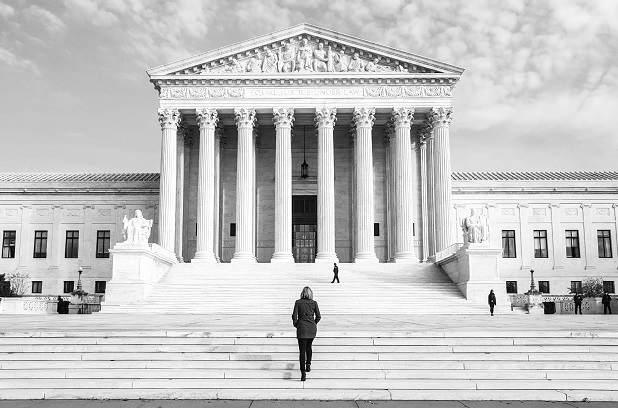The Supreme Court has remanded, or sent back forrehearing, an ESOP claim to the U.S. Court of Appeals for theSecond Circuit.
|The claim in Retirement Plans Committee of IBM v. Janderinvolves a complex intercession between ERISA and securities laws,and what a corporate officer with inside information that thecompany stock will drop should do when they also serve as afiduciary to the employee stock ownership plan.
|The questions raised in the IBM case evolve from a 2014 Supreme Court ESOPdecision, Fifth Third Bancorp v. Dudenhoeffer.
|In Dudenhoeffer, the Supreme Court established a "more harm thangood" pleading standard for claims against fiduciaries, which saidcourts should consider whether disclosing insider information thatwould cause company stock value to drop would hurt participants inthe ESOP.
|In 2014, IBM divested its Microelectronics business. Afterfailing to find a buyer, IBM struck a deal with a chipmaker thatresulted in a $2.4 billion write-down to IBM's balance sheet, andanother $800 million in costs from the deal.
|By the end of the day the deal was announced, IBM's stock pricedropped more than $12 a share, or 7 percent of its value.
|Plaintiffs in the ESOP brought two suits in the SouthernDistrict of New York, one under securities laws, one under ERISA.Both alleged IBM fiduciaries imprudently managed the ESOP byfailing to disclose the Microelectronics unit's losses.
|The ERISA claim was dismissed on the grounds that disclosing theinsider information on the unit's losses would have harmedretirement savers in the ESOP more than not disclosing themwould.
|On appeal, the 2nd Circuit overturned the lower court, ruling"no prudent fiduciary could have concluded that an earlierdisclosure would have done more harm than good."
|Unanimous punt
The Supreme Court's decision to remand the case to the 2ndCircuit was unanimous.
|"This is a bit of a punt by the Supreme Court," said KevinWalsh, a partner in the Groom Law Group. "The Court was asked toprovide more guidance on Dudenhoeffer. Nine of the most esteemedlegal scholars in the world decided they would rather have someoneelse to that."
|Attorneys for IBM argued that ERISA does not require ESOPfiduciaries to act on insider information.
|And in its brief, the U.S. Solicitor General argued that anERISA fiduciary's disclosure of inside information would conflictwith securities laws on insider trading and corporatedisclosures.
|But the lower court did not consider those questions, which iswhy the justices unanimously decided to remand the case.
|"The Second Circuit did not address these arguments, and, forthat reason, neither shall we," according to the decision.
|Hints of dissent on the High Court
Two supplemental briefs, one filed by Justice Elana Kagan, oneby Justice Neil Gorsuch, show that while the court may have been inagreement to remand the case, it holds dissenting views on how ESOPplan fiduciaries should manage insider information.
|"The petitioners (IBM) argue that ERISA imposes no duty on anESOP fiduciary to act on insider information," wrote Justice Kagan."But Dudenhoeffer makes clear that an ESOP fiduciary at times hassuch a duty."
|Justice Gorsuch suggested that Kagan's reading of Dudenhoefferis overly broad, and expressed concerns that plan fiduciaries withseparate corporate roles–and insider information–could be liable asfiduciaries for non-fiduciary actions.
|"Because ERISA fiduciaries are liable only for actions takenwhile acting as a fiduciary, it would be odd to hold the samefiduciaries liable for alternative actions they could have takenonly in some other capacity," wrote Gorsuch.
|"Kagan suggested the Jander arguments have some merit, whileGorsuch has concerns there is tension between a plan fiduciary'sroles and their non-fiduciary roles," explained Groom Law'sWalsh.
|Insider information issues present a host of thorny questions,noted Walsh.
|"Companies might think plan participants benefit when seniorleaders are making investment decisions for a plan. But if wecreate additional exposure by including senior leadership in plandecision making, we create the risk that the top leadership willnot be willing to serve as plan fiduciaries," said Walsh.
|"I don't see how that would benefit participants," he added.
|READ MORE:
Complete your profile to continue reading and get FREE access to BenefitsPRO, part of your ALM digital membership.
Your access to unlimited BenefitsPRO content isn’t changing.
Once you are an ALM digital member, you’ll receive:
- Critical BenefitsPRO information including cutting edge post-reform success strategies, access to educational webcasts and videos, resources from industry leaders, and informative Newsletters.
- Exclusive discounts on ALM, BenefitsPRO magazine and BenefitsPRO.com events
- Access to other award-winning ALM websites including ThinkAdvisor.com and Law.com
Already have an account? Sign In
© 2024 ALM Global, LLC, All Rights Reserved. Request academic re-use from www.copyright.com. All other uses, submit a request to [email protected]. For more information visit Asset & Logo Licensing.









